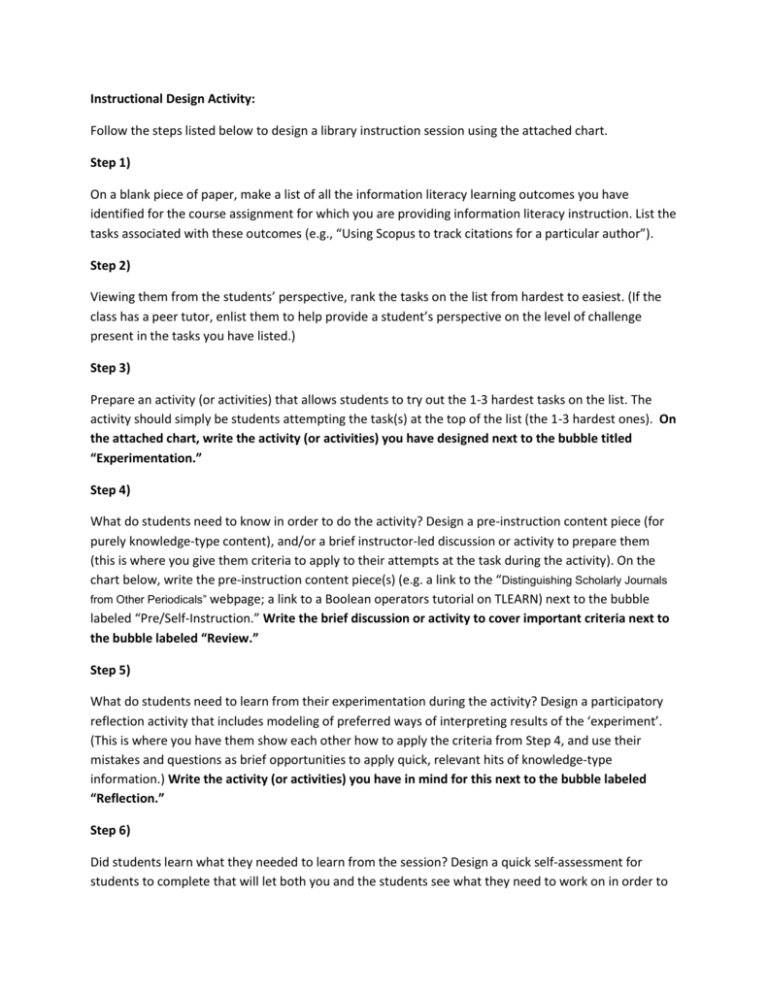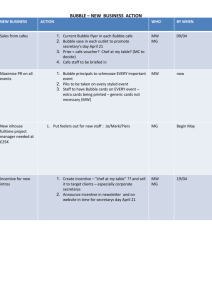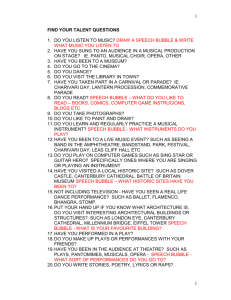Instructional Design Activity: Follow the steps listed below to design
advertisement

Instructional Design Activity: Follow the steps listed below to design a library instruction session using the attached chart. Step 1) On a blank piece of paper, make a list of all the information literacy learning outcomes you have identified for the course assignment for which you are providing information literacy instruction. List the tasks associated with these outcomes (e.g., “Using Scopus to track citations for a particular author”). Step 2) Viewing them from the students’ perspective, rank the tasks on the list from hardest to easiest. (If the class has a peer tutor, enlist them to help provide a student’s perspective on the level of challenge present in the tasks you have listed.) Step 3) Prepare an activity (or activities) that allows students to try out the 1-3 hardest tasks on the list. The activity should simply be students attempting the task(s) at the top of the list (the 1-3 hardest ones). On the attached chart, write the activity (or activities) you have designed next to the bubble titled “Experimentation.” Step 4) What do students need to know in order to do the activity? Design a pre-instruction content piece (for purely knowledge-type content), and/or a brief instructor-led discussion or activity to prepare them (this is where you give them criteria to apply to their attempts at the task during the activity). On the chart below, write the pre-instruction content piece(s) (e.g. a link to the “Distinguishing Scholarly Journals from Other Periodicals” webpage; a link to a Boolean operators tutorial on TLEARN) next to the bubble labeled “Pre/Self-Instruction.” Write the brief discussion or activity to cover important criteria next to the bubble labeled “Review.” Step 5) What do students need to learn from their experimentation during the activity? Design a participatory reflection activity that includes modeling of preferred ways of interpreting results of the ‘experiment’. (This is where you have them show each other how to apply the criteria from Step 4, and use their mistakes and questions as brief opportunities to apply quick, relevant hits of knowledge-type information.) Write the activity (or activities) you have in mind for this next to the bubble labeled “Reflection.” Step 6) Did students learn what they needed to learn from the session? Design a quick self-assessment for students to complete that will let both you and the students see what they need to work on in order to master the tasks required to complete the assignment. (Sample self-assessment question: “I was able to use subject terms to find relevant scholarly articles in JSTOR. Choose one: Strongly Agree, Agree, Not sure, Disagree, Strongly Disagree” Write this next to the bubble labeled “Self-Assessment.” Step 7) How can students get further instruction? Include contact information and ways to get help in all of your course content, and state it clearly at the beginning and end of the class. Write these resources into the space next to the bubble labeled “Follow-Up” below. Step 8) What conditions need to be in place for the activity to take place? Does each student need to be seated at a computer? Is special software required? Is group work, access to other parts of the library, assistance from a library staff member, peer tutor, or faculty technology liaison desirable? Create a list of preferred conditions, and use this list to choose and prepare a learning space. Step 9) Digest the goals of the session you have just planned into one or two sentences. In the space next to the bubble below labeled “Introduction,” write your name and title, followed by these succinctly state goals. E.g., “My name is Darcy McLovin, and I am a reference librarian and liaison for Geography here at Trinity University. Today we are going to learn how to use library and online resources to do the research required for your final project assignment.” Sample framework for a 50 minute class: 5% introduction (state/restate goals) 10% review (reiterate criteria for success) 50% hands-on activity (active experimentation) 25% reflection (model the application of criteria for success to the results of the active experimentation; answer related questions) 10% assessment (have students self-assess their learning; use office hours/research appts/peer tutors to address gaps)






